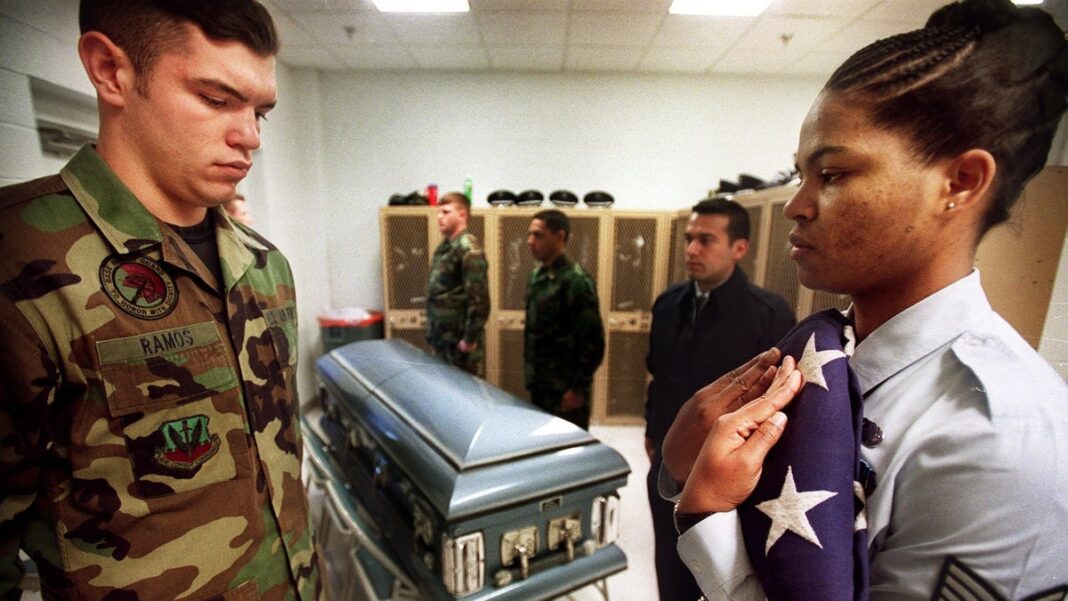Military Suicides Continue to Rise, Yet Army Reports Some Positive Developments
In the Army, handguns are linked to approximately 75% of suicide fatalities. By delaying gun access or securing medications for just an hour, the risk of suicide can be significantly reduced.
WASHINGTON – Recently, the Army has experienced a decrease in suicide rates, marking a positive shift in a concerning trend that has been affecting the military for years.
A Pentagon report made public on Thursday reveals that suicides within the military increased last year, but the Army, being the largest branch, has started to see a decline this year.
Last year, the Army had the highest number of reported suicides at 279, which is an increase of 25 compared to the previous year. In contrast, the Marine Corps reported 71, the Navy had 78, the Air Force counted 93, and the Space Force recorded two suicides.
According to military officials speaking with YSL News, the decline in 2024 can be attributed to a focus on the secure storage of firearms and medications, as well as renewed initiatives aimed at reducing stress in soldiers’ lives.
“Preliminary data indicates significant improvement this year,” noted Army Col. Kevin Goke, a key figure in suicide prevention efforts.
As of October, the Army has seen 23 fewer suicides among active-duty personnel than during the same timeframe in 2023, according to Randy Lane, an Army suicide data expert. Current suicide rates are below the averages from the last five and ten years.
Suicide Rates Continue to Climb Across the Military
Last year, the Pentagon recorded a total of 523 military suicides, an increase from 493 in 2022, based on the latest report.
Timothy Hoyt, who serves as the deputy director of the Office of Force Resiliency, stated that this rise reflects national suicide trends, exacerbated by specific military risk factors in the short term.
Most military suicides involve the use of firearms, as highlighted by Hoyt. In response, the Pentagon has initiated programs to encourage a culture of safety, including promoting safe storage of firearms, especially in barracks and dormitory settings.
According to Goke, handguns are involved in approximately three-quarters of Army suicide cases. This alarming statistic has led commanders to prioritize safety measures. Ensuring that access to firearms is delayed by safely storing them or securing medications can significantly reduce suicide risk, he explained.
“If someone is required to unlock a gun safe, that process is tactical and logical, potentially pulling them out of a moment of despair and allowing time for reconsideration,” Goke mentioned.
Rates of suicide among active-duty service members exceed those in reserve units, with 363 active-duty suicides recorded in 2023, representing a 12% increase from the previous year—continuing a troubling trend over the last twelve years. However, the suicide rates among reserve and National Guard services are comparatively stable,” Hoyt stated.
Over 60% of active-duty members who took their own lives were young men under 30, a statistic consistent with previous years. Furthermore, only 42% had been diagnosed with behavioral health issues.
About half of the suicides among soldiers occur without any clear warning signs being detected by commanders, peers, or family. Goke pointed out that reducing stressors can help prevent overwhelming feelings that might lead to such decisions.
As an example, Goke mentioned childcare, a stressor that can vary based on location. For instance, at a rural base like Fort Johnson in Louisiana, the challenge might be finding enough childcare providers, while at Joint Base Lewis McChord in Tacoma, Washington, the high cost of childcare in an urban environment could be the main concern. Each scenario will demand tailored solutions from the Army.
“While it may not directly relate to suicide, it still represents a significant stressor in an individual’s life,” he noted, explaining that accumulated stresses can lead to tragic situations.
The military continues to implement measures aimed at tackling the growing suicide rates, including enhancing mental health care access and reducing the stigma associated with seeking such help.
According to Hoyt, “We are intensifying our revision efforts concerning suicide prevention training.”
When asked why previous programs have not curbed the recent rise in suicides, Hoyt pointed to “insufficient investment” and a lack of thorough evaluation of program effectiveness over the past two decades.
The military has faced challenges concerning rising suicide rates among service members in recent years. An earlier Pentagon study revealed that between 2014 and 2019, American soldiers were more likely to die by suicide than in combat.
The U.S. suicide rate has surged by over 35% between 2000 and 2018. It saw a slight decline in the following two years but has been increasing again since 2021.

